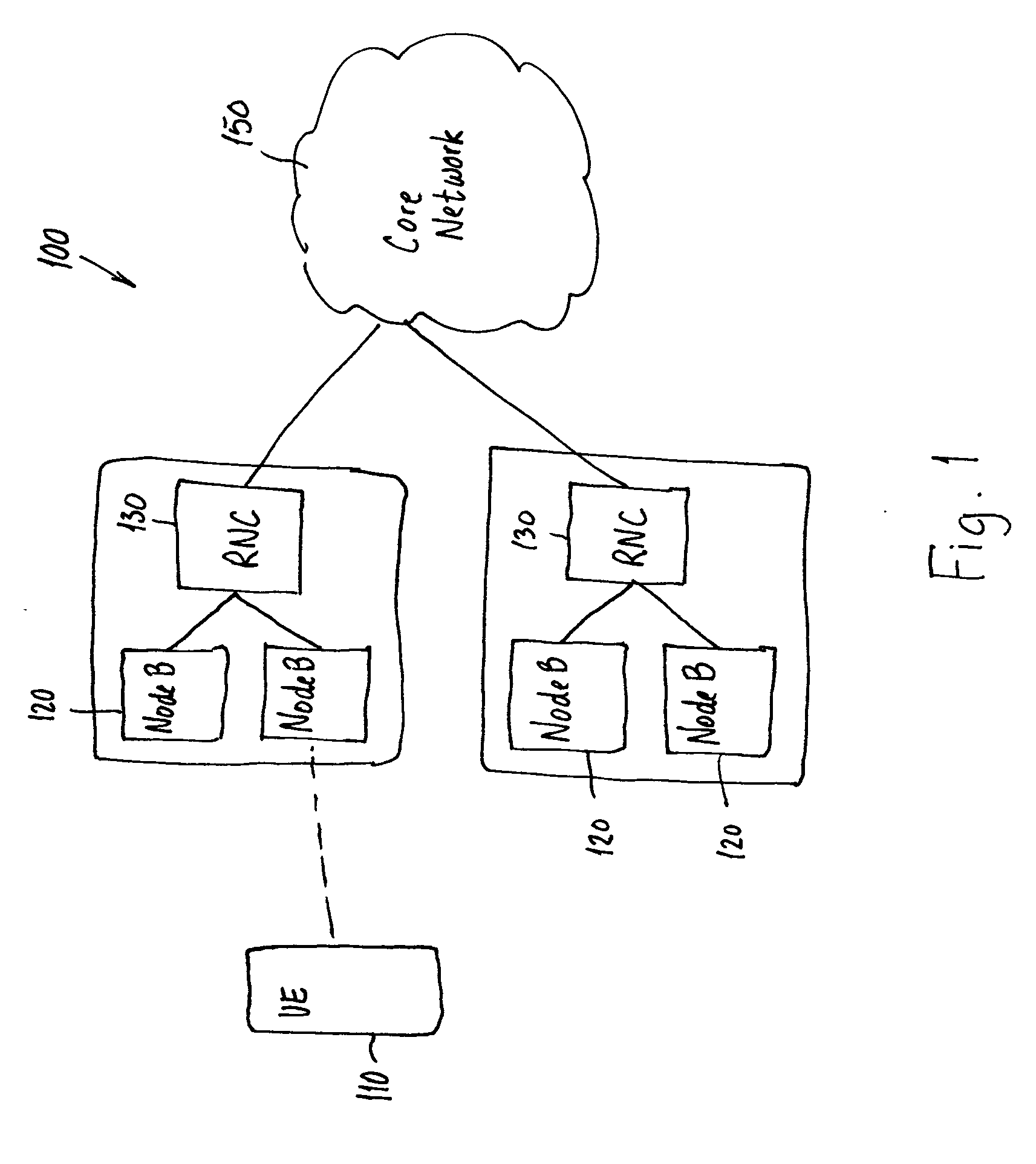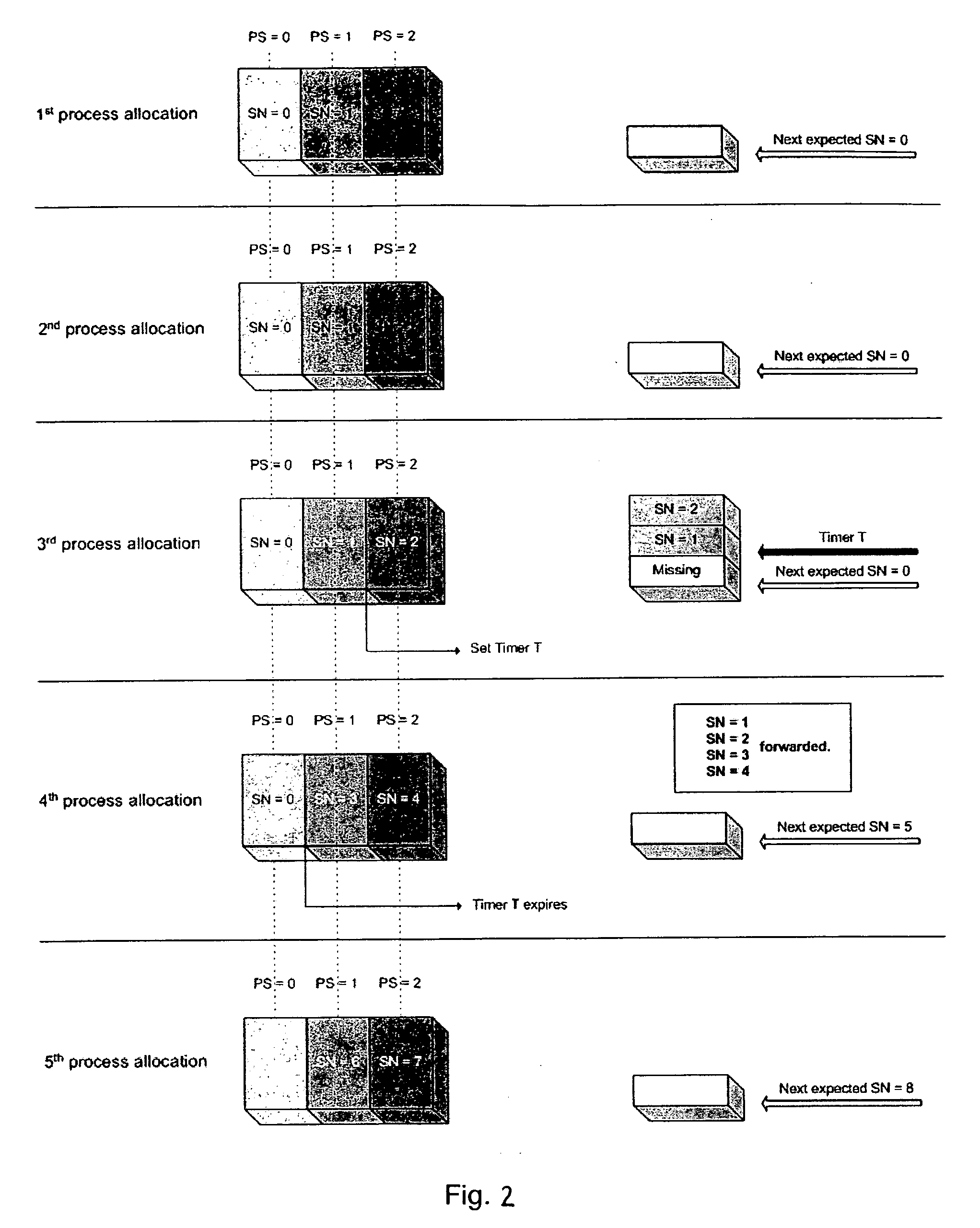Delay-reduced stall avoidance mechanism for reordering a transport block
- Summary
- Abstract
- Description
- Claims
- Application Information
AI Technical Summary
Benefits of technology
Problems solved by technology
Method used
Image
Examples
Embodiment Construction
[0050]FIG. 1 is a schematic diagram of an example of a network in which the present invention is implemented. A Radio Access Network (RAN) 100 includes a User Equipment (UE) 110 in communication with at least one base station, i.e., Node B 120, of a plurality of base stations such as Node Bs 120. Each of the Node Bs 120 is connected to a Radio Network Controller (RNC) 130 which is connected to a core network 150. The RNCs 130 communicate with each other and are, e.g., responsible for handover decisions. The present invention relates to uplink transmissions and includes transmissions from a UE 110 to a Node B and transmissions from a Node B 120 to an RNC 130. Each of the UE 110, Node B 120, and RNC 130 include processors for processing data as described below. The processors may include specifically designed hardware or may be arranged to run programs for performing the functions described below.
[0051]FIG. 2 shows allocations for the first through fifth transmissions of three synchr...
PUM
 Login to View More
Login to View More Abstract
Description
Claims
Application Information
 Login to View More
Login to View More - R&D
- Intellectual Property
- Life Sciences
- Materials
- Tech Scout
- Unparalleled Data Quality
- Higher Quality Content
- 60% Fewer Hallucinations
Browse by: Latest US Patents, China's latest patents, Technical Efficacy Thesaurus, Application Domain, Technology Topic, Popular Technical Reports.
© 2025 PatSnap. All rights reserved.Legal|Privacy policy|Modern Slavery Act Transparency Statement|Sitemap|About US| Contact US: help@patsnap.com



